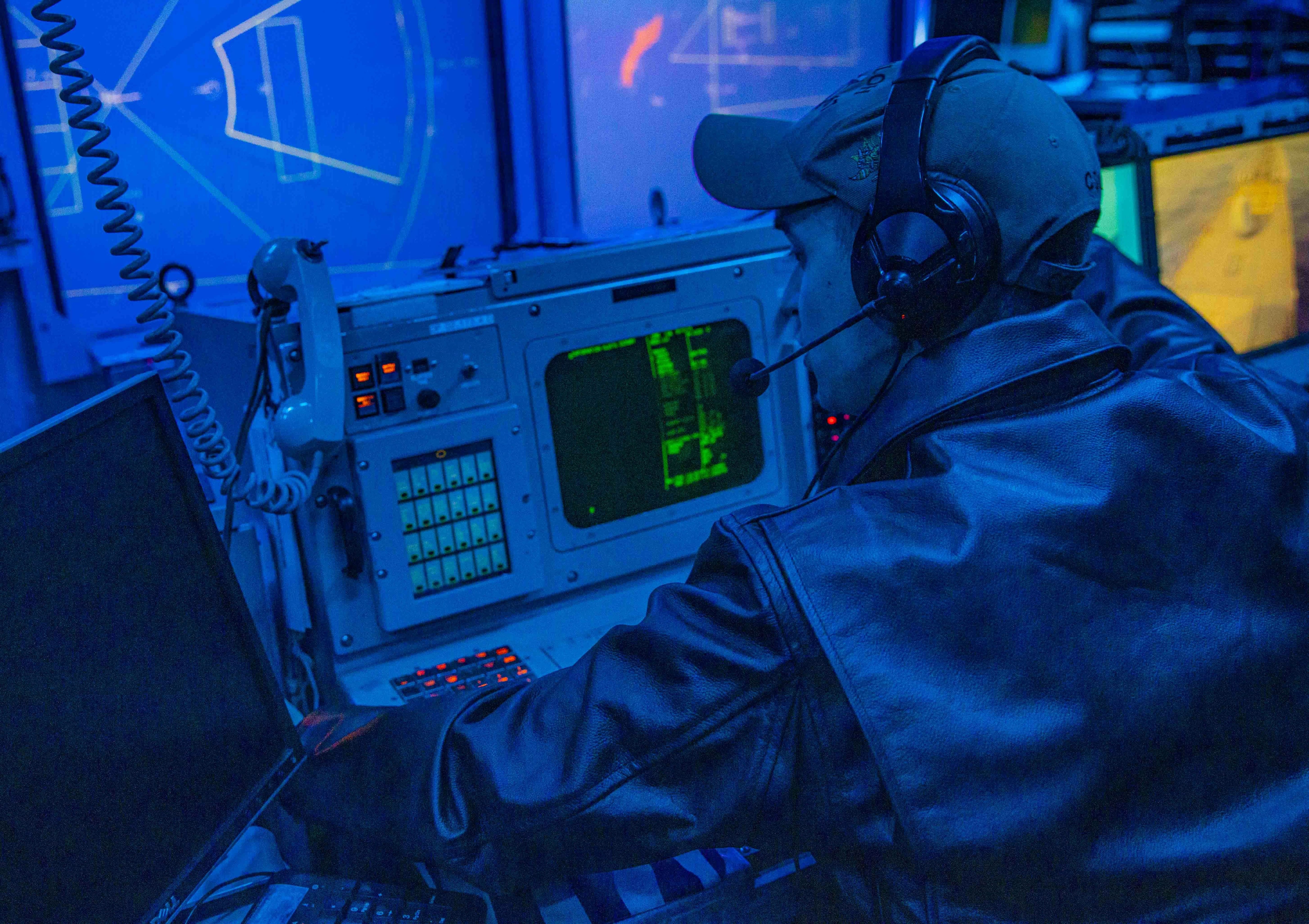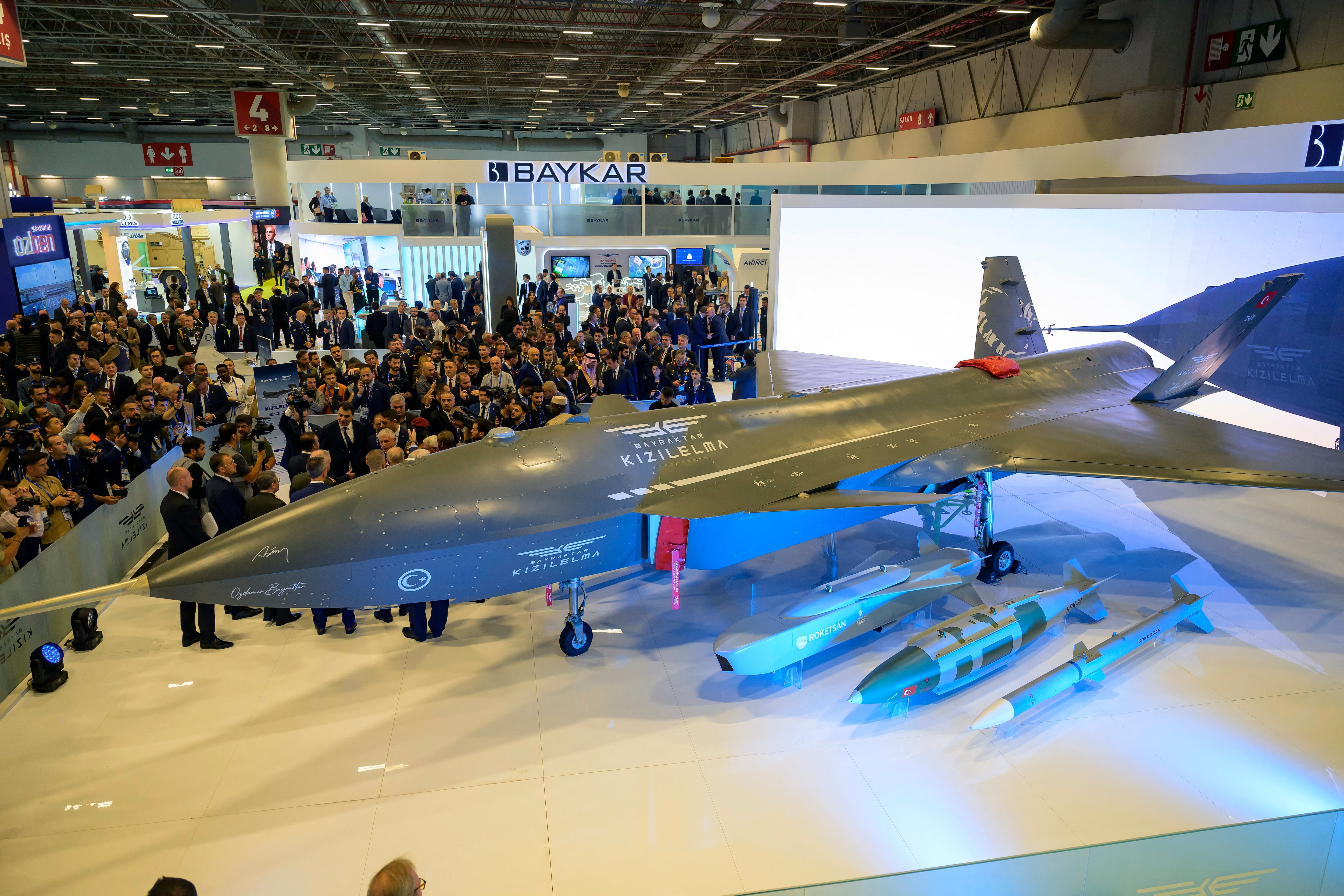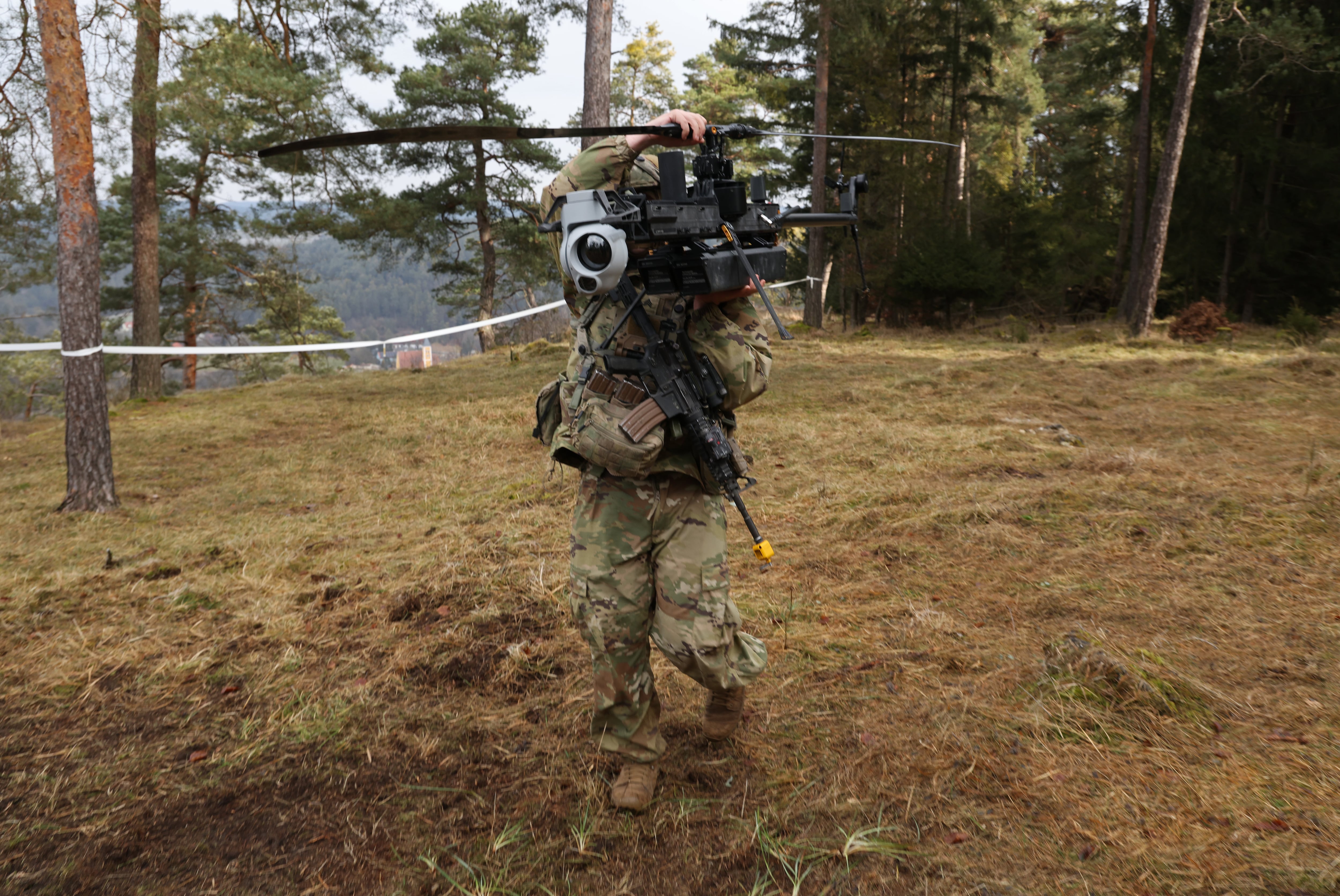SAN DIEGO — Northrop Grumman, the world’s fourth-largest defense contractor by revenue, said it was able to share information between a high-flying surveillance drone and stand-ins for fighter jets and warships in what it called a first-of-its-kind flight test.
The successful trial, carried out in October, demonstrated the ability to connect military assets in the air with those at sea, a significant step toward future U.S. Navy operations defined by daunting distance and contested communications, company executives said Feb. 13.
The test involved an MQ-4C Triton drone, outfitted with a “gateway,” and a handful of simulated battlefield players: an F-35, an E-2D Advanced Hawkeye and Aegis class destroyers.
Using the gateway, which hooked into the Triton’s onboard radar and artificial intelligence, the drone relayed sensor data to what the company billed as previously disconnected platforms. Such a sentiment strikes at the heart of the Department of Defense’s connect-everything-everywhere campaign known as Joint All-Domain Command and Control.
“This powerful combination expands the mission set of maritime platforms to deliver a seamlessly connected fleet,” Ben Davies, a Northrop vice president and general manager for network-information solutions, said in a statement.
RELATED

To stay ahead of China and Russia, the U.S. military is attempting to dissolve the walls that have long compartmentalized the services, their databases and their weapons. The multibillion-dollar endeavor, referred to as JADC2, envisions any sensor feeding any shooter the data he or she needs — meaning responses to foreign aggression will likely be quicker, more efficient and less constrained by geography.
At the same time, the Navy is pursuing what’s known as distributed maritime operations: becoming harder to find, harder to target and harder to sink. Underpinning the concept is the need for reliable, insulated connectivity.
The gateway installed on the Triton drone boosts its data-sharing capabilities and, in the long run, could help link forces scattered across the Indo-Pacific or other watery expanses.
“Triton’s altitude, persistence and robust communication links make it an ideal candidate to host the gateway system,” Jane Bishop, a Northrop vice president and general manager for global surveillance, said in a statement. “This demonstration highlighted gateway technology enhancements to Triton that would enable information dominance across distributed maritime assets, including access to the F-35′s robust sensor suite and the E-2D’s battle management capabilities.”
The demonstration also featured the Naval Air Systems Command, Naval Information Warfare Center Pacific and BAE Systems. Both Northrop and BAE are among the 10 largest defense contractors in the world when ranked by revenue, according to Defense News analysis.
Colin Demarest was a reporter at C4ISRNET, where he covered military networks, cyber and IT. Colin had previously covered the Department of Energy and its National Nuclear Security Administration — namely Cold War cleanup and nuclear weapons development — for a daily newspaper in South Carolina. Colin is also an award-winning photographer.








